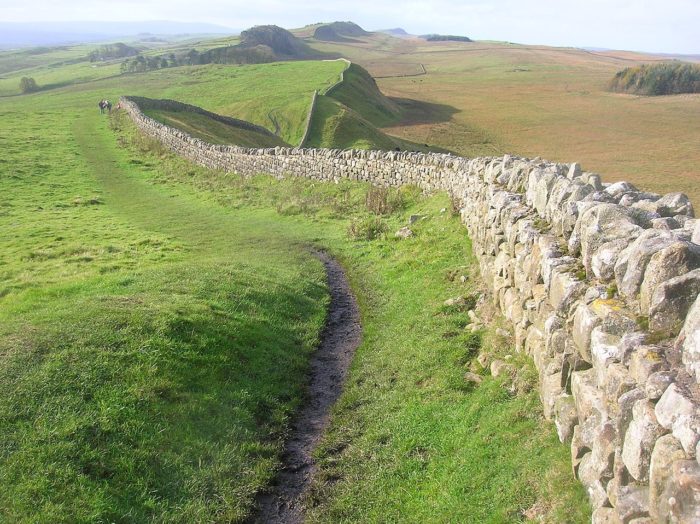by Ann Cleeves
This year marks the 1900th anniversary of Hadrian’s Wall. According to a history written many years later, Emperor Hadrian visited Britain, one of the most far-flung regions of the Empire, in 122 AD. He decided he needed to ‘put many things to rights’ and ordered a wall to be built to keep out the wild marauders, ‘the barbarians,’ from the north.

Photo credit: quisnovus from Gloucester, England.
This file is licensed under the Creative Commons Attribution 2.0 Generic license.
The wall has never separated England from Scotland—those countries never existed in Hadrian’s day—and now much of my, and Vera’s, Northumberland lies to the north of the beautifully constructed barrier. It crosses the isthmus that runs seventy-four miles between the estuaries of the Solway in Cumbria to the West the Tyne to the East.
Three legions of regular trained British troops built the wall, each consisting of five thousand heavily armed men. It was manned by auxiliaries from further afield; most had been recruited from the northwestern provinces of the Empire, but some came from much further away. I wonder what those men from Southern Europe made of their bleak and windswept new home. Did they dream of the sunshine? Of lemons and wine and olives?
After all this time, the wall still stands, very much a part of this wild and beautiful landscape. In some places, only small stretches remain in fields grazed by sheep or in the suburbs of the city Newcastle and the town of Wallsend on the Tyne, where once huge ships were built and sent out into the world. The studios where many of the interior scenes of the TV drama Vera are filmed are in Wallsend, a short distance from the fort of Segedunum, which marks the easterly point of the wall, and where visitors are welcome. Here the ancient and the post-industrial landscapes meet.
In other places, extensive forts have been excavated and we have a sense of the places where soldiers worked and lived. Perhaps the best place to visit is Vindolanda, where excavation is still taking place, and where a museum brings the world of the fort to life. Vindolanda was built even before the wall, but went on to become an important garrison in its own right.
Fascinating artifacts have been found there. When they were discovered, the famous Vindolanda tablets were the oldest surviving hand-written documents in Britain. They record military matters, but also personal messages from the members of the garrison to their friends and families. Specialists continue to catalog the collections of leather found on the site—there are shoes, beautifully made and still almost entirely intact. Most recently, two long, thin buildings were discovered. One had been identified as a schola, an officers’ mess and club, where the middle ranks would meet to dine and socialize.
In January, the 1900 bunting challenge was launched. The aim is to get 1900 flags of bunting to be strung together to form an exhibition at Roman Vindolanda to mark the building of the wall. Flags have been arriving from all over the world. The wall, built to keep warring factions apart, is now very much bringing people together.
Hadrian’s Wall is a prominent feature in Ann Cleeve’s fictional short story Frozen. In Frozen, a decade old mystery is revived, and Detective Inspector Vera Stanhope must uncover secrets long buried before this case once again goes cold. You can learn more or download your free copy here.
Ann Cleeves is the multi-million copy bestselling author behind two hit television series—Shetland, starring Douglas Henshall, and Vera, starring Academy Award Nominee Brenda Blethyn—both of which are watched and loved in the United States.
Shetland and Vera are available on BritBox in the United States. An adaptation of The Long Call, the first book in her Two Rivers series, premiered on BritBox in 2021.
The first Shetland novel, Raven Black, won the Crime Writers’ Association Gold Dagger for best crime novel, Ann was awarded the CWA Diamond Dagger in 2017, and was awarded the OBE in 2022 for services to reading and libraries. She lives in the United Kingdom.

